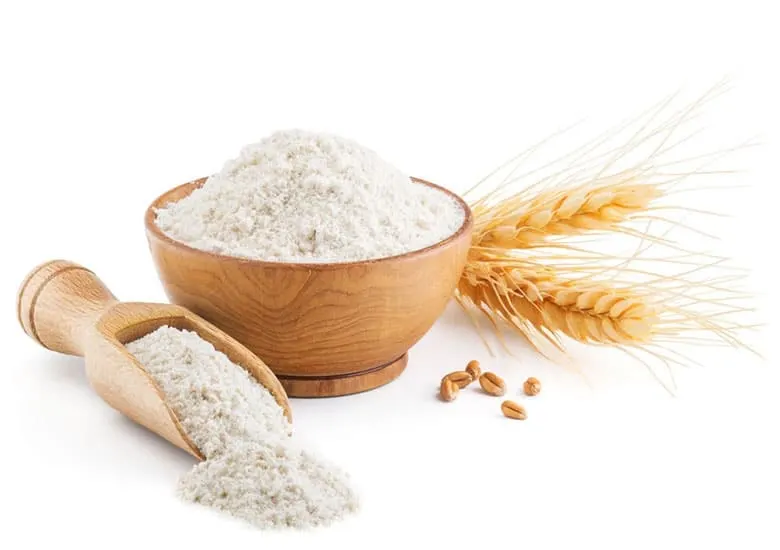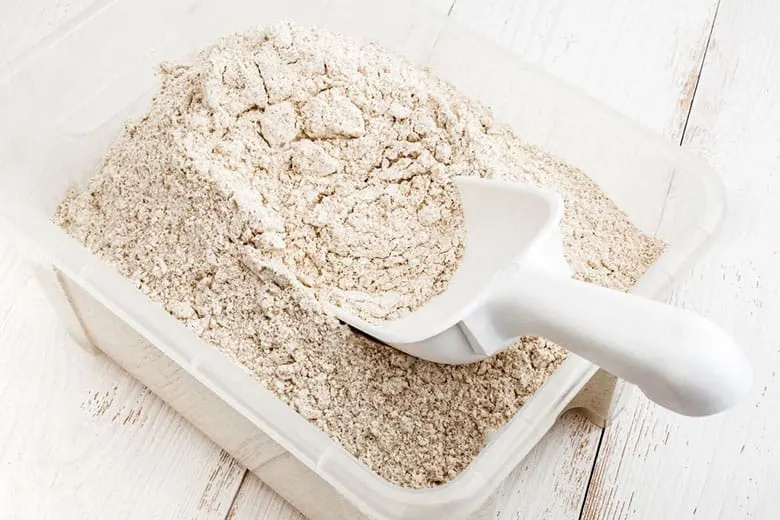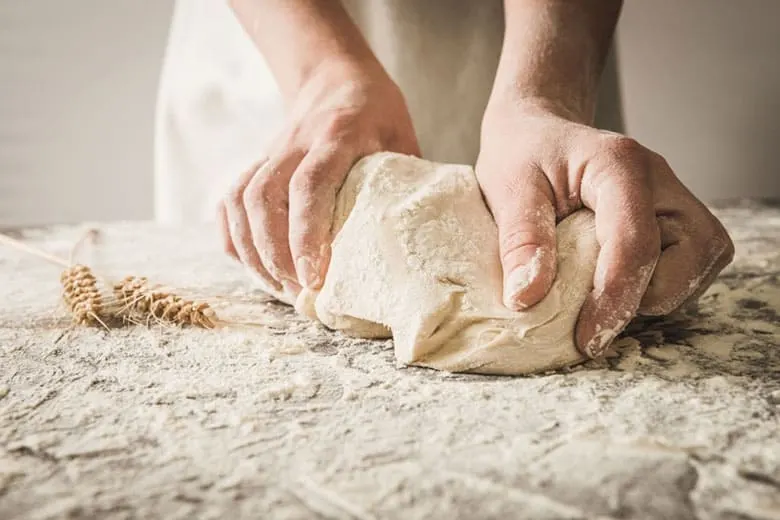Whole wheat flour is often preferred over plain white flour because of its additional health benefits.
And with the growing concern for eating healthy today, choosing to substitute your plain white flour with whole wheat flour can do wonders.
Flour is a food item that can be used in countless recipes, from sweet pastries to savory garlic and cheese naans, muffins, and pancakes.

Shifting gears from plain white flour to whole wheat flour will by no means curb your culinary adventures or rob you of delicious food.
There are a ton of whole wheat flour recipes you can try that have additional health benefits.
Both plain white flour and whole wheat flour have equal amounts of calories, but the great thing about whole wheat is that it has the added benefit of extra fiber, nutrients, and vitamins.
So want to know how long does whole wheat flour last? Let’s find out.
How Long Does Whole Wheat Flour Last? Does Whole Wheat Flour Go Bad?

Whole wheat flour has a shorter shelf-life than plain white flour. This is because of the way it is processed.
While plain white flour contains only the starchy endosperm, whole wheat flour contains all parts of the grain. That is the bran, germ, and endosperm.
According to Healthline, this flour may be more prone to spoilage because of the fat present in the bran and germ, which are abundant in oils.
An unopen packet of whole wheat flour can last for about 1-3 months in a cool, dry pantry with fewer chances of damage because of humidity. Refrigeration or freezing is not wholly necessary as flour is largely dry.
In fact, the US Department of Agriculture, flour is considered to be literally shelf-stable. Meaning, you store it in your pantry at room temperature without any need for extra cooling.
The best way to make sure you don’t have to get to the point where you’re required to store your flour in a refrigerator or freezer is by making sure you’ve sealed the packets properly.
What you can also do is estimate the amount of flour you need on a day to day basis and purchase accordingly.
Whole flour wheat will go bad if your package is left open to be contaminated by bacteria that thrive in warm temperatures.
So, once you’ve opened your flour packet, make sure it’s one with a zip lock. If it’s not, transfer it to one or store it in an airtight container at room temperature.
You don’t have to worry much about keeping track of your flour’s estimated shelf-life. Manufactured packets you purchase at a grocery store have labels printed with a ‘best by’ or ‘use before’ date along with the manufactured date.
Using the information provided on the labels is a good way to make sure you’re not consuming flour that has gone bad.
You’re not likely to suffer from any serious health consequences in the long run. However, you wouldn’t want to take a possible risk.
How to Tell if Whole Wheat Flour is Bad?

When your packet of whole wheat flour has gone bad, you’re going to notice a couple of changes in the texture, taste, and smell of the flour. It’s also going to look discolored.
Flour gone bad is going to feel lumpy. This is because of the reaction of the flour with bacteria, which fosters the growth of mold.
You’re likely to find colonies of dark spots, which are a tell-tale sign of mold in your flour. Discard immediately if you sight any.
Consuming stale flour is not going certainly going to cause you serious illness. However, sometimes if the molds that form in your flour are ones that produce harmful chemicals like mycotoxins, you could suffer symptoms like diarrhea and vomiting.
Prolonged consumption of bad flour, on the other hand, might cause cancer and liver disease, according to PubMed Central.
Bad flour is also going to taste sour and smell rancid. Sampling a pinch of your flour will make it pretty obvious if it’s gone bad.
Food waste is a serious problem we need to concern ourselves with, so make sure you preserve your flour well, so you don’t end up tossing it into the bin.
Conclusion

We can never be careful enough with food. Good food is essential for a healthy body and mind, and you’re only doing yourself a favor by preserving it the right way.
Always refer to dates printed on a flour packet and make sure you’re consuming nutritious whole wheat flour.
At the end of the day, diligence pays off. In this case, with extra iron, calcium, Vitamin B types, protein, and antioxidants, fewer chances of diabetes, obesity, heart disease,
to name a few. So, get whipping good whole wheat; it’s worth it and more.

How Long Does Whole Wheat Flour Last? Does Whole Wheat Flour Go Bad?
Ingredients
- Whole wheat flour
- Air-tight containers or Ziplock bags
- Labels and markers
Instructions
- Read the guide thoroughly to learn how long it lasts.
- Check the u0022Best-by-dateu0022 to know when it expires.
- Make sure to store in an airtight container in a cool, dark place (pantry or fridge).
- Always check for signs of spoilage before using.
